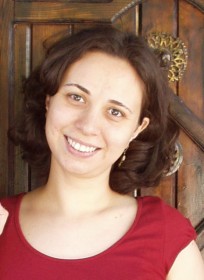
VASC Seminar
January

3:00 pm to 4:00 pm
Event Location: NSH 1507
Bio: Pinar Duygulu has received her BSc, MSc and PhD degrees from Department of Computer Engineering at Middle East Technical University, Ankara, Turkey in 1996, 1998 and 2003 respectively. During her PhD, she was a visiting scholar at University of California at Berkeley under the supervision of Prof. David Forsyth. After being a post-doctoral researcher at Informadia Project at Carnegie Mellon University, she joined to Department of Computer Engineering at Bilkent University, Ankara, Turkey. She is the co-director of RETINA Vision and Learning Group at Bilkent. Her current research interests include computer vision and multimedia data mining, specifically object, face and action recognition in large image and video collections and analysis of historical documents. She received the best paper in Cognitive Vision award at European Conference on Computer Vision in 2002. She is the recipient of TUBITAK Career award. Currently, she spends her sabbatical at Carnegie Mellon University as a Fulbright scholar.
Abstract: In this talk, I will present our recent efforts on large-scale video analysis. In the first part of the talk, I will discuss about leveraging large amounts images and videos on the web to design methods that learn from weakly labeled data. Firstly, focusing on images, I will present our approaches on re-ranking and semi-automatic concept learning using results of text-based queries. I will describe two methods for organization of the results through clustering and outlier detection: one designed with the assumption of a single dominant category, and another one to also handle different variations. Then, I discuss a problem that we attacked recently on capturing common characteristics of unusual videos through use of large amounts of videos on the web.
In the second part of the talk, I will summarize our work on human activity analysis. Focusing on human poses, our motivation is to come up with simple but effective representations. I will present how we utilize Histogram of Rectangles, Line and Flow Histograms, and Line-Pairs for recognition of actions not only from sequences but also from single images. I will then describe our methods for recognition of actions from 3D models generated by multiple cameras. Finally, I will present our recent efforts on understanding daily activities and asthma inhaler use with the motivation of elderly and patient care.